The BEST episodes of PBS Specials season 2005
Every episode of PBS Specials season 2005, ranked from best to worst by thousands of votes from fans of the show. The best episodes of PBS Specials season 2005!
The Public Broadcasting Service (PBS) is an American non-profit public broadcasting television service with 354 member TV stations in the United States which hold collective ownership. However, its operations are largely funded by the Corporation for Public Broadcasting. Its headquarters are in Arlington, Virginia. PBS is the most prominent provider of programming to U.S. public television stations, distributing series such as PBS NewsHour, Masterpiece, and Frontline. Since the mid-2000s, Roper polls commissioned by PBS have consistently placed the service as America's most trusted national institution. However, PBS is not responsible for all programming carried on public TV stations; in fact, stations usually receive a large portion of their content (including most pledge drive specials) from third-party sources, such as American Public Television, NETA, and independent producers.
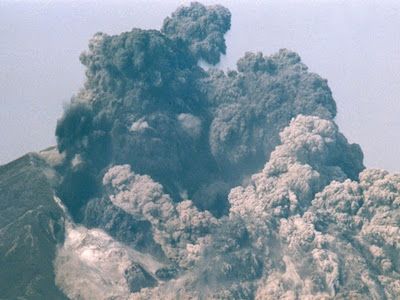
#1 - St. Helens: Out of the Ash
Season 2005 - Episode 5 - Aired 5/17/2005
It was the "perfect mountain", a shapely peak dubbed the Fuji of the West. 9,677 feet of snow-capped grandeur in the heart of the Cascade Range. On May 18, 1980 Mt. St. Helens captured the attention of the world with a volcanic display unequaled in modern times. This is the story of the cataclysmic events of that day, and the miraculous resiliency of Nature as life returns out of the ash.
Watch Now:Amazon#2 - California Dreamin': The Songs of 'The Mamas & the Papas'
Season 2005 - Episode 2 - Aired 3/1/2005
California Dreamin': The Songs of the Mamas & the Papas is a one-hour documentary prepared for public television, to be shown during pledge drives to get those baby boomers to call in and contribute. As its title and the TV-G rating that pops up right at the beginning suggest, this look at the group is more interested in the music than in wallowing in the backstage scandals much loved by, for example, VH1 Behind the Music, which spent a very different hour chronicling the Mamas & the Papas' career a few years earlier.
#3 - Great Cities of Europe
Season 2005 - Episode 3 - Aired 3/5/2005
Explore some of the very best sites, sounds and tastes Europe has to offer. This series takes you from one European hot spot to the next, introducing you to famous landmarks as well as great places to sleep, eat and soak up the culture.
#4 - Window to the Sea
Season 2005 - Episode 15 - Aired 12/28/2005
A portrait of 4 US aquariums: Shedd Aquarium in Chicago, Illinois; Monterey Bay Aquarium in Monterey, California; New England Aquarium in Boston, Massachusetts; and Waikiki Aquarium in Honolulu, Hawaii. Nararted by Phil Knoerzer
#5 - Global Warming: The Signs and the Science
Season 2005 - Episode 11 - Aired 11/2/2005
This documentary profiles people who are living with the grave consequences of a changing climate, as well as the individuals, communities and scientists inventing new approaches to safeguard our children's future. Filmed across the U.S., Asia and South America, this program brings the reality of climate change to life and offers viewers a variety of ways to make a difference in their own communities.
#6 - Get Up, Stand Up: The Story of Pop and Protest
Season 2005 - Episode 7 - Aired 9/28/2005
Since the early 20th century, musicians have come together in the name of human rights to fight war, hunger, corruption, oppression, AIDS, apartheid, and Third World debt. From single songs passed by word of mouth to star-studded, multimillion-dollar benefits, activists from Joe Hill to Bob Geldof have spoken up by singing out, drawing together disparate groups of people with unforgettable verse and universal harmony. GET UP, STAND UP serves as a timely reminder of the potent role music has played in a century's worth of political protest.
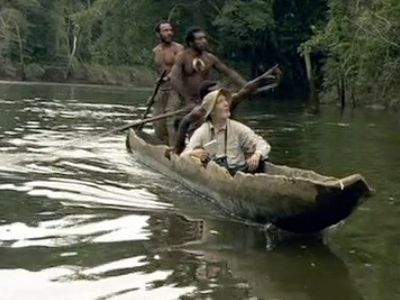
#7 - Guns, Germs and Steel: Out of Eden
Season 2005 - Episode 12 - Aired 11/7/2005
Jared Diamond’s journey of discovery began on the island of Papua New Guinea. There, in 1974, a local named Yali asked Diamond a deceptively simple question: “Why is it that you white people developed so much cargo, but we black people had little cargo of our own?” Diamond realized that Yali’s question penetrated the heart of a great mystery of human history -- the roots of global inequality. Why were Europeans the ones with all the cargo? Why had they taken over so much of the world, instead of the native people of New Guinea? How did Europeans end up with what Diamond terms the agents of conquest: guns, germs and steel? It was these agents of conquest that allowed 168 Spanish conquistadors to defeat an Imperial Inca army of 80,000 in 1532, and set a pattern of European conquest which would continue right up to the present day. Diamond knew that the answer had little to do with ingenuity or individual skill. From his own experience in the jungles of New Guinea, he had observed that native hunter-gatherers were just as intelligent as people of European descent -- and far more resourceful. Their lives were tough, and it seemed a terrible paradox of history that these extraordinary people should be the conquered, and not the conquerors. To examine the reasons for European success, Jared realized he had to peel back the layers of history and begin his search at a time of equality – a time when all the peoples of the world lived in exactly the same way. Time of Equality At the end of the last Ice Age, around thirteen thousand years ago, people on all continents followed a so-called Stone Age way of life – they survived by hunting and gathering the available wild animals and plants. When resources were plentiful, this was a productive way of life. But in times of scarcity, hunting and gathering was a precarious mode of survival. Populations remained relatively small, and the simple task of finding food occupied every waking momen
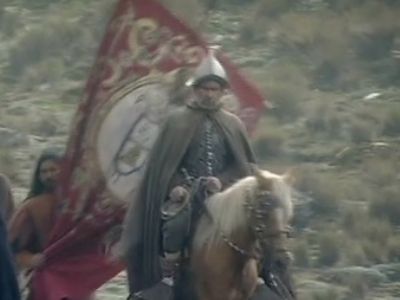
#8 - Guns, Germs and Steel: Conquest
Season 2005 - Episode 13 - Aired 11/7/2005
On November 15th 1532, 168 Spanish conquistadors arrive in the holy city of Cajamarca, at the heart of the Inca Empire, in Peru. They are exhausted, outnumbered and terrified – ahead of them are camped 80,000 Inca troops and the entourage of the Emperor himself. Yet, within just 24 hours, more than 7,000 Inca warriors lie slaughtered; the Emperor languishes in chains; and the victorious Europeans begin a reign of colonial terror which will sweep through the entire American continent. Why was the balance of power so unequal between the Old World, and the New? Can Jared Diamond explain how America fell to guns, germs and steel? Two Empires Pizarro, leader of the Spanish conquistadors Spaniard Francisco Pizarro has gone down in history as the man who conquered the Inca. Leading a small company of mercenaries and adventurers, this former swineherd from a provincial town in Spain managed to demolish one of the most sophisticated Empires the world has ever seen. From Pizarro's home town of Trujillo, Jared Diamond pieces together the story of the Spaniards' victory over the Inca, tracing the invisible hand of geography. On the surface, the Spaniards had discovered a foreign empire remarkably similar to their own. The Inca had built an advanced, politically sophisticated, civilization on the foundations of successful agriculture. They had ruthlessly conquered their neighbors in South America, and by 1532 governed a vast territory, the length and breadth of the Andes. But as Jared discovers, the Inca lacked some critical agents of conquest. Horses vs Llamas Eurasia boasted 13 of the 14 domesticable mammals in the world as native species. Among these was the horse. As Diamond learns, the horse was fundamental to the farming success of Eurasian societies, providing not only food and fertilizer but also, crucially, load-bearing power and transport – transforming the productivity of the land. The only non-Eurasian domest
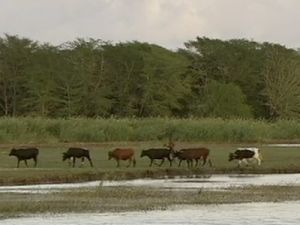
#9 - Guns, Germs and Steel: Into the Tropics
Season 2005 - Episode 14 - Aired 11/7/2005
So far, Jared Diamond has demonstrated how geography favoured one group of people – Europeans – endowing them with agents of conquest ahead of their rivals around the world. Guns, germs and steel allowed Europeans to colonize vast tracts of the globe – but what happened when this all-conquering package arrived in Africa, the birthplace of humanity? Can Jared Diamond's theories explain how a continent so rich in natural resources, could have ended up the poorest continent on earth? Guns Germs and Steel triumph again...? Jared's journey begins on a steam train in Cape Town, designed to carry civilization to the heart of the so-called 'dark continent'. In the Cape, Jared discovers a landscape and way of life that feels very European – farms growing cattle, wheat, grapes and barley; settler communities dating back over three hundred years. He realizes that the first European settlers in southern Africa were dealt a very lucky hand by geography – they landed in one of the few temperate zones of the southern hemisphere – a climate to which their crops an animals were ideally suited. These foundations of their historical success worked for them even 6,000 miles from home and they were able to sweep aside the indigenous hunting communities with ease – assisted by the impact of European germs. But these settlers were not ones to stand still. A mass migration known as the Great Trek took thousands of Dutch settlers north and east – into unknown territory – and, as they found to their cost, into Zulu land. The Zulus had built a sophisticated African state based on military conquest – and now they resisted European invasion. But eventually, overcoming the limitations of their weapons and inheriting new, automatic weapons form industrialized Europe, the settlers triumphed over their rival African tribes - at the cost of thousands of lives. Jared observes that the story of Guns, Germs and Steel seems to be unfolding all over again. But
#10 - A Cemetery Special
Season 2005 - Episode 10 - Aired 10/26/2005
A Cemetery Special is a 2005 PBS television documentary film by Rick Sebak of WQED. The documentary profiles cemeteries and cemetery-related businesses and events across the United States. The following cemeteries are covered in the film: Allegheny Cemetery — Pittsburgh, Pennsylvania Mount Auburn Cemetery — Greater Boston, Massachusetts Rock of Ages Corporation — Graniteville, Vermont Hope Cemetery — Barre, Vermont Cypress Lawn Memorial Park — Colma, California Key West Cemetery — Key West, Florida Memorial Day — Waterloo, New York Lake View Cemetery — Cleveland, Ohio Oakland Cemetery — Atlanta, Georgia Birch Hill Cemetery — Fairbanks, Alaska
#11 - The Sixties: The Years That Shaped a Generation
Season 2005 - Episode 8 - Aired 9/29/2005
A defining chapter in America's past, the '60s shaped a generation and sculpted a political landscape that can still be seen today. The story of the '60s is illuminated with images of freedom protests, atom bombs, flower power, and a nation divided by war. It was a time when a generation rebelled and lost its innocence. From the Vietnam War to the struggle for racial equality to the birth of a counter-culture explosion, the 1960s was a decade of change, experimentation and hope that transformed an entire nation. The two-hour documentary features revealing interviews with the prominent figures of the era including: Barbara Ehrenreich, Daniel Ellsberg, Jesse Jackson, Tom Hayden, Arlo Guthrie, Henry Kissinger, Norman Mailer, Robert McNamara, Ed Meese III and Bobby Seale.
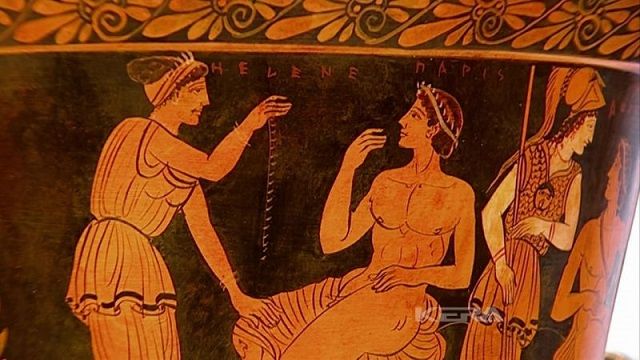
#12 - Helen of Troy
Season 2005 - Episode 9 - Aired 10/12/2005
Acclaimed presenter of historic documentaries, Bettany Hughes, embarks on a journey across the eastern Mediterranean to discover the truth about HELEN OF TROY, the woman blamed for causing the Trojan War, a conflict that resulted in countless deaths. Following weapons experts, the two-hour film shows how the conflict in Helens name would have been fought, unraveling the reality from the myths and putting flesh on the "face that launched a thousand ships", exploring the ways the Greeks made love and war circa 1300 B.C.
#13 - Krakatoa
Season 2005 - Episode 4 - Aired 4/26/2005
Using dramatic recreations and CGI, the program brings the May 20, 1883, eruption to life. The eruption reduced the island of Krakatoa to a third of its former size and sent waves that reportedly topped 100 feet high crashing onto Asian shores, killing 36,000. Portions of the program tie the resulting tsunami destruction to the December 26, 2004, tsunami.
#14 - Declining by Degrees: Higher Education at Risk
Season 2005 - Episode 6 - Aired 6/23/2005
In this revealing documentary, veteran correspondent John Merrow takes you behind the ivy-covered walls of our colleges and universities to see if they are delivering on their promise.
#15 - Do You Speak American?
Season 2005 - Episode 1 - Aired 1/5/2005
Journalist Robert MacNeil travels across the USA to observe the current state of the spoken American English language.